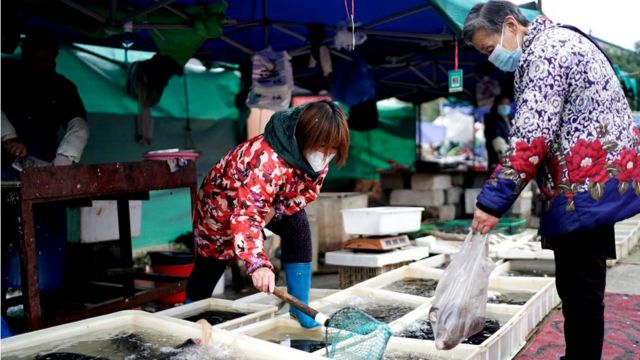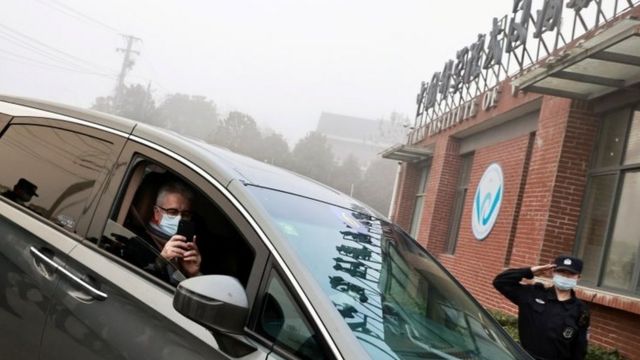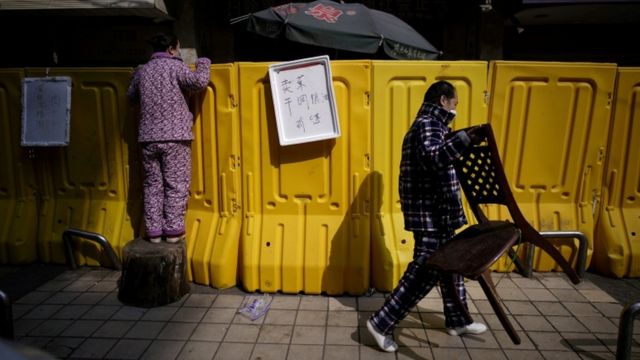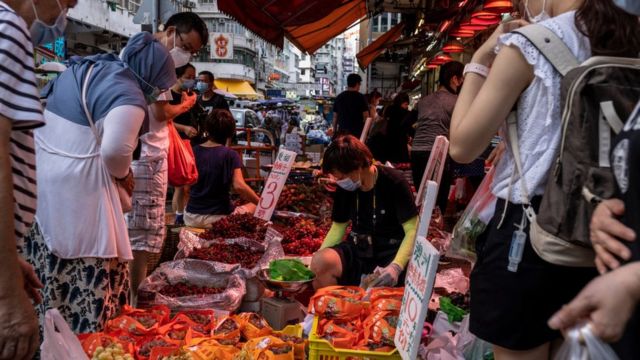Origin of the coronavirus: from bats to the laboratory, see the conclusions of the WHO investigation in China
The first cases of coronavirus were reported in China - WHO mission went to the country in January in search of answers
The most recent report by the World Health Organization (WHO) on the origin of the coronavirus leaves one of the main unknowns of this pandemic open: how the virus emerged and how it reached humans.
However, it does offer some important tips for understanding the current health crisis.
"This report is a very important start, but it is not the end," WHO Director-General Tedros Adhanom Ghebreyesus said in a statement.
"We have not yet discovered the origin of the virus," he said, guaranteeing that "as far as WHO is concerned, all the chances are still on the table."
However, the mission was strictly controlled by the local authorities, who initially resisted its realization.
Below is a summary of the study's conclusions.
4 conclusions about the origin of the virus
The 120-page report looked at four possible explanations for the virus's origin and its spread to humans.
Based on the evidence collected, the experts concluded that:
1- It is "possible or probable" that the origin was direct contagion from animal to human
The report presents this argument based on the fact that there is strong evidence that most of today's human coronaviruses originated in animals.
According to the document, the animal that directly transmitted the virus to humans could be the bat, an animal that is known to carry a large proportion of viruses that can be transmitted to humans.
The report, however, also leaves open the possibility that a pangolin or a mink (both mammals common in Asia) was the animal that infected a human with the virus.
2- It is "probable or very likely" that there was an intermediate animal between an infected animal and man
This scenario suggests that a first animal that developed the virus infected an animal of another species and the latter infected a human.
This is based on the fact that the viruses found in bats related to SARS-CoV-2 have differences that suggest that there may be a "missing link".
This missing link can be an animal that came into contact with the first animal that developed the virus and also with a human being.
The document mentions that the growing number of animals susceptible to SARS-CoV-2 includes wild animals domesticated on farms.
This, according to the researchers, "leads to complex transmission routes that can be difficult to unravel".
3- It is "possible" that the virus has reached humans through food products
This hypothesis looked at the possibility of the virus reaching humans through food or the containers in which they are stored.
This includes frozen foods that are commonly sold in markets such as Wuhan.
At first, the scientific community considered that the beginning of the pandemic occurred in the Huanan market
There is evidence to suggest that SARS-CoV-2 can survive in contaminated frozen products, a possibility that the official Chinese press has repeatedly pointed out in recent months, pointing to products brought in from abroad as the origin of the virus.
However, the WHO document states that there is no conclusive evidence for the transmission of SARS-CoV-2 from food and that the likelihood of contamination is very low.
4- It is "extremely unlikely" that the virus has reached humans due to an incident in the laboratory
This scenario refers to the possibility that an incident in a virus research laboratory caused the accidental contagion of people.
The document clarifies that the researchers did not analyze the possibility that someone had deliberately spread the virus.
Nor did they ask whether the virus was manufactured in the laboratory, since this possibility has already been ruled out by other scientists based on the analysis of the virus genome.
The report recognizes that although they are rare cases, accidents can occur in a laboratory.
"When working in particular with virus cultures, but also with inoculations of animals or clinical samples, humans can be infected in laboratories with limited biosafety, due to bad practices or negligence," the document states.
The WHO mission also visited the Wuhan Institute of Virology as part of its research
However, the report notes that "there are no records of SARS-CoV-2-related viruses in any laboratory before December 2019, or genomes that in combination could provide a SARS-CoV-2 genome."
According to WHO, the three Wuhan laboratories working with coronavirus have "high quality biosafety levels", with teams in which no covid-19-related disease was reported during the weeks or months prior to December 2019.
Tedros, however, said that "more data and studies are needed to reach more robust conclusions" about the possibility of the virus being the product of a laboratory incident, an argument that the administration of former US President Donald Trump insisted on spreading. without presenting any evidence.
"Although the team concluded that a laboratory leak is the least likely hypothesis, it requires further investigation, possibly with additional missions involving experts," said the WHO director.
3 unanswered questions
The WHO document leaves unknowns that can only be resolved with more research, including on animal farms that supply markets in Wuhan and other cities.
1- The Wuhan market
Many of the first reported cases of covid-19 are associated with the Huanan market in the city of Wuhan.
Since the beginning of the pandemic, Wuhan has been seen as the possible source of the coronavirus outbreak.
The investigation, however, maintains that "there is no firm conclusion" about the role that this place played in the origin of the pandemic.
The first case of covid-19 in Wuhan was detected in late December 2019
The document maintains that, although the first cases were related to the Huanan market, a similar number of cases were associated with other markets. And there are even cases unrelated to any market.
The team confirmed that there was widespread contamination of SARS-CoV-2 in the Huanan market in Wuhan, but was unable to determine the source of that contamination.
"This may suggest that the Huanan market was not the original source of the outbreak," said the report.
2- Farms in other countries
The research suggests that the virus may have reached the Wuhan market from wildlife farms that supply the market and where a higher prevalence of SARS-CoV-2 has been detected in bats.
The document warns that, although this "does not demonstrate a link", it opens an important path of investigation.
When the first outbreak was detected, the Huanan market was receiving animal products from 20 countries, including some where positive cases of SARS-CoV-2 were reported in late 2019.
WHO experts recommend research in other markets in the region
The study suggests that analyzing the trade in animals and products in other markets, as well as studying animals susceptible to the virus on farms in Southeast Asia, may provide clues to trace the origin of the virus.
Peter Daszak, one of the WHO delegates for this research, says that wildlife farms in Southeast Asia are the most likely source of the pandemic's onset.
These farms could be the place where a coronavirus jumped from a bat to another animal and from there to people, he said.
In turn, Tedros said that "it will be important to carry out further studies to identify the role that wildlife farms may have played in introducing the virus into the markets of Wuhan and elsewhere".
3- Prime i ros cases
The report also suggests that the SARS-CoV-2 virus may have been circulating for "several weeks" before it was first detected in humans.
The team reviewed studies published in several countries that indicate an early circulation of the virus.
The report says that several samples that appear to be positive were detected before the first case in Wuhan, suggesting that the virus may have circulated in other countries.
The researchers warn that "the quality of the studies is limited" but that it is nevertheless important to investigate the first possible cases of contagion.
Mission members in China recommended further testing of wild animals and animals in China and Southeast Asia, more studies of the first cases of Covid-19 and more tracking of farm supply chains to markets in Wuhan.
Despite the progress of this research, the WHO director said that "finding the source of the virus takes time".
"A single research trip cannot provide all the answers," he concluded.







No comments:
Post a Comment